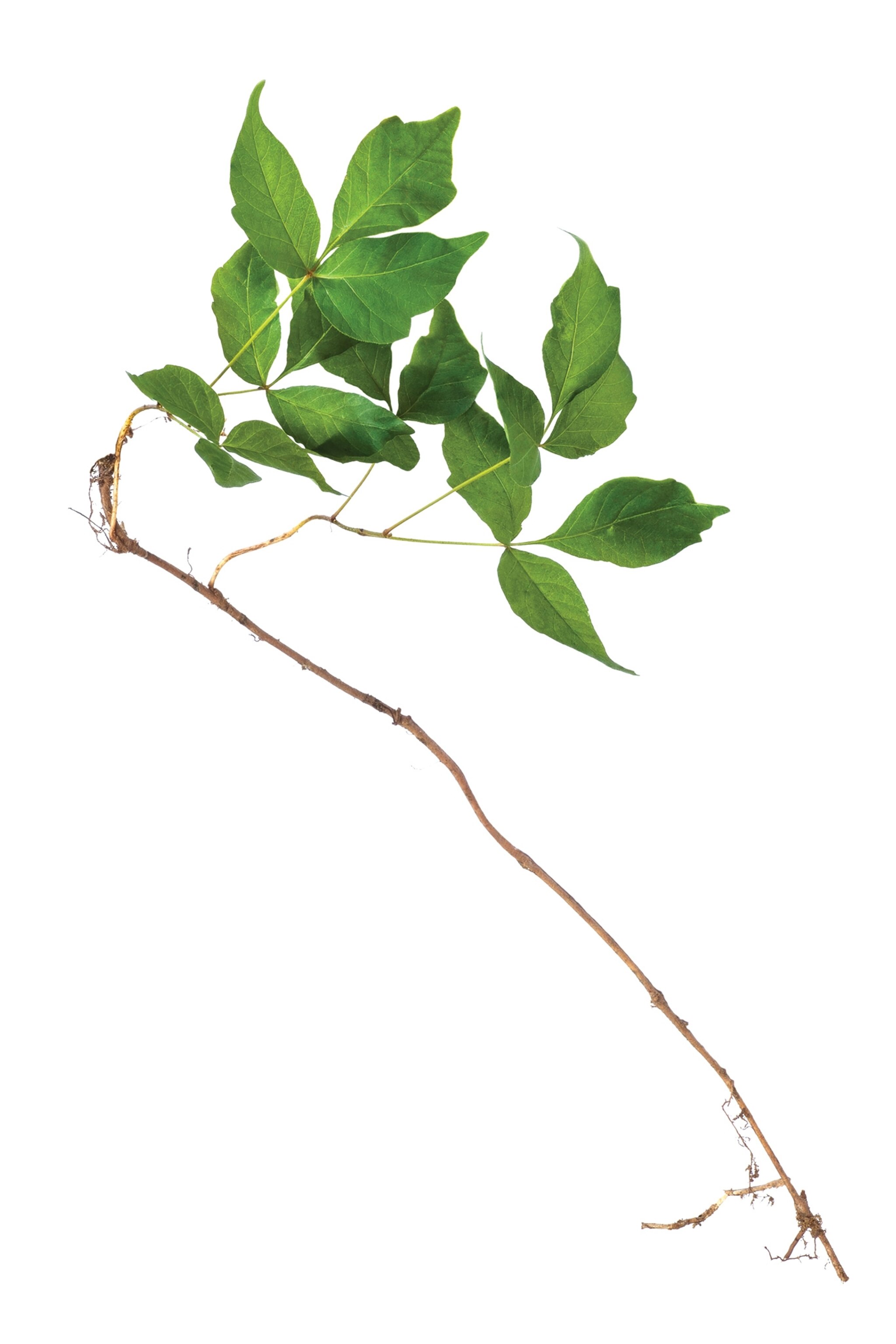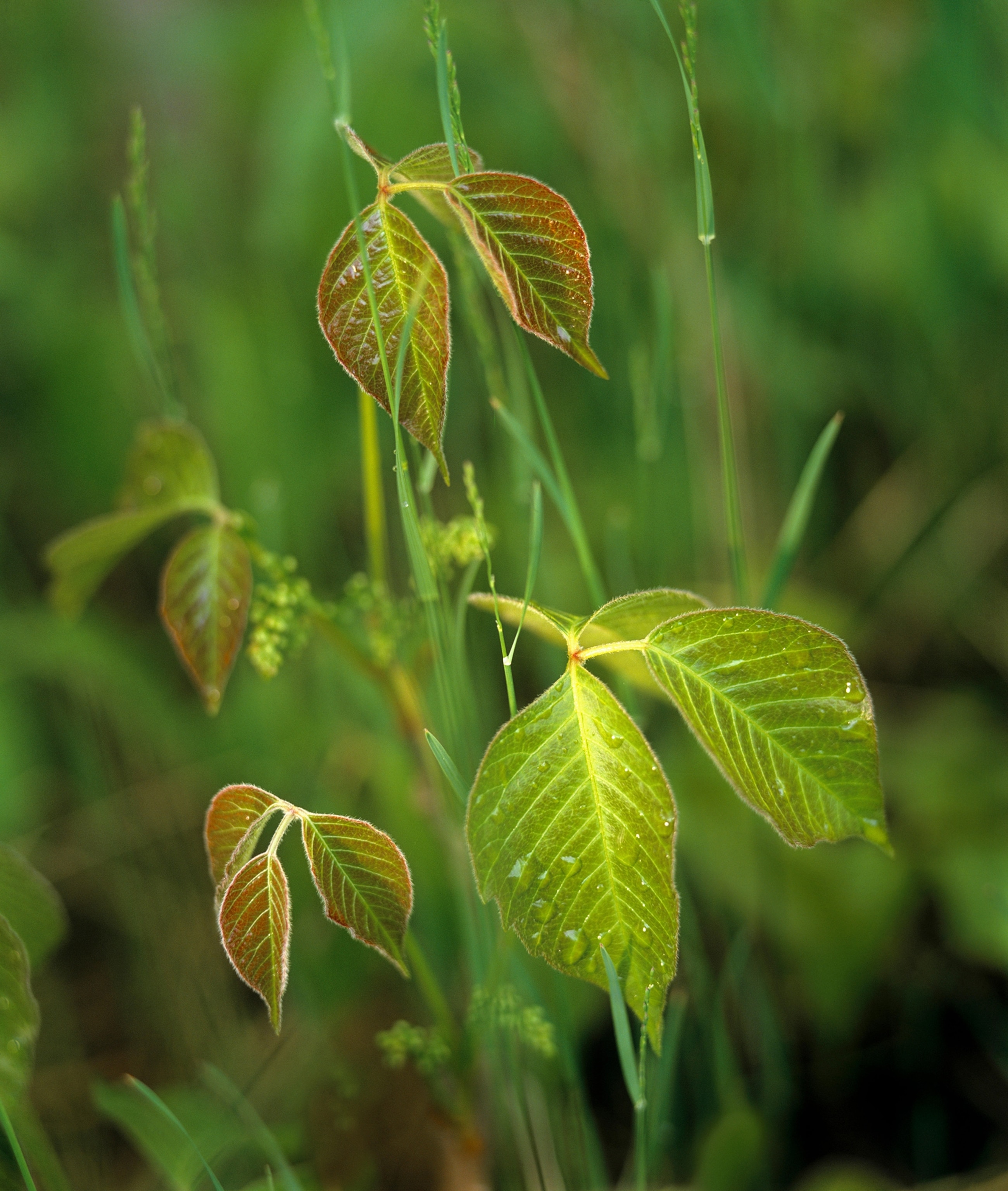Why poison ivy is an unlikely climate change winner
Poison ivy demands respect and challenges our epidemic of “plant blindness.” It’s getting more noxious with rising carbon dioxide levels.

An old-time saying warns that if a plant has leaves of three, let it be. This bit of folk wisdom is meant to warn people about poison ivy, a noxious vine in the genus Toxicodendron found throughout much of North America. Poison ivy contains a chemical that can cause a vicious allergic reaction when it comes into contact with skin. This rash consists of oozing blisters that itch and hurt.
Some people think they’re immune to poison ivy’s charms. They’re probably wrong. The oily substance it contains, urushiol, tends to cause more intense reactions over time and it affects up to 90 percent of people. Luckily, if within a couple hours of exposure you wash off the oil with soap—and, ideally, a washcloth—you can spare yourself the whole ordeal.
This plant stands to benefit immensely from climate change. In a six-year study conducted at Duke University in the early 2000s, scientists raised ambient levels of carbon dioxide in a forest plot to 570 ppm over the course of the experiment, roughly the concentrations expected by the end of the 21st century. They found that poison ivy increased its biomass by 67 percent more than poison ivy without elevated levels of the greenhouse gas.
“That was the largest response of any species in the forest,” says William Schlesinger, a co-author on that study, the retired president of the Cary Institute of Ecosystem Studies. (Related: Learn about the ancient history of the Osage orange tree.)

Why does CO2 make poison ivy go wild? “When carbon dioxide increases, vines are able to respond more, in part [because] they don’t need to make wood,” explains Lewis Ziska, a biologist at Columbia University. “They glom on to what other trees are there,” he says, and “convert more of that carbon into leaves and stems.”
This experiment and a follow-up paper—both co-authored by Ziska and biologist Jacqueline Mohan—suggest poison ivy has already hugely benefited from recent increases in atmospheric carbon.
The plant also produced a more allergenic form of urushiol in the future-climate scenario, with an altered amount of saturated carbon-carbon bonds that make it more likely to cause rashes, Ziska says.

Despite its effects on humans, the plant doesn’t cause contact dermatitis for other species. In fact, its seeds are an important food for many birds, and its leaves are fodder for herbivores, including deer. Its ability to quickly grow and send out roots in places like sand dunes makes it important for controlling erosion, explains Susan Pell, executive director of the United States Botanic Garden in Washington D.C.
Poison ivy is an “early successional” species, meaning it thrives in disturbed areas—such as roadsides and fields and green spaces in urban areas. This ends up exposing many people to it, often unwittingly. The oils are not only spread by direct contact but carried on the fur of pets, and they can remain on tools or other surfaces for years at levels sufficient to cause rashes. The effects can be worse than just annoying: If the plant is burned, the fumes it gives off can cause severe lung irritation, and, rarely, even death.
Many people in Western societies know little about plants, and often have trouble recognizing even common species, a situation some researchers have called “plant blindness.” One positive thing about poison ivy is that it challenges this predicament.
If you don’t know what it looks like and spend time out in nature, you’re likely to eventually suffer for it—perhaps terribly. Poison ivy demands respect, and recognition.
To be fair, the plant is clever and has a few tricks up its tendrils. It can appear as a woody vine, or liana, that clings to trees, branching out from an unmistakable shaggy, hairy main mass. Or it can take the form of a shrub, or even an ivy-like ground cover. The leaves can be green, reddish, or bronze; matte or shiny; lobed or unlobed. Leaf size varies wildly.

“There's an enormous amount of plasticity, sometimes even in the same population,” Pell says. She has seen, in one area, plants with leaves only an inch-long, others the size of her face.
Perhaps the old idiom about leaves-of-three is appropriate, then, for the uninitiated—although there are many more friendly three-leaved plants that deserve recognition and wonder, such as trillium, clover, raspberries, and many more. (Related: Invasive garlic mustard hurts native species—but its harmful powers are waning.)
But if you spend enough time looking for poison ivy and learning its ways, it will eventually become unmistakable—at least usually.
Pell, one of the world’s foremost experts on the plant, was hiking recently and pointed out how similar newly-developing poison ivy leaves look to those of Virginia creeper.
“When they’re very young it can be quite difficult to tell them apart,” Pell says. “What I always teach is that if you think it might be poison ivy, don’t touch it.”





